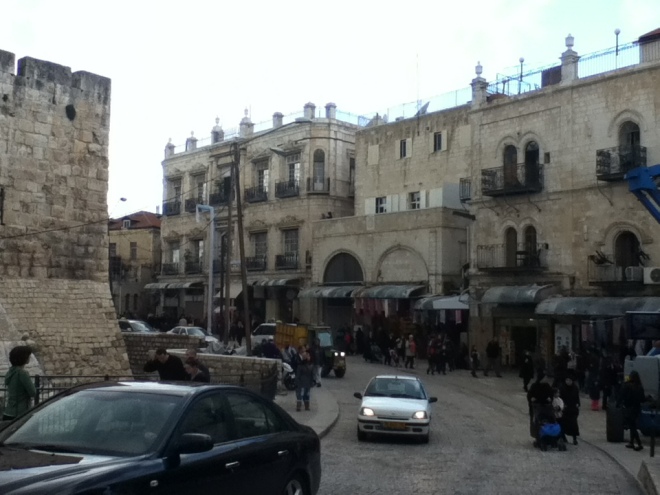I have been reading this blog and have previously read another one, both of which promote a concept known as the traditional city. If you have ever lived in an old world city, town, or village, you have almost certainly been in one of these. In Israel, two of the most prominent examples are Old Jerusalem and Sefat. A lot can be said about this way of building settlements, but the one main motif is small streets. They generally say about 8 to 20 feet is the range for the basic street, with 12 to 14 as the best area. And this means frontface of a building to frontface, no lawns in between. Everything else does not really matter, it can be scaled to any size, made of any material, painted any color. What it does is create a “sense of place”. You feel like you belong.
Libertarians are often mocked, and it does often seem that we all want our backforest 5-10 acre spread with chickens and goats. I want that too, but in reality, many of us dont, or dont need it. And if you are religious, you need a local, accessible community. North Americans are so miserable in our suburbs and enormous cities that we often feel the need to escape to parks and other areas to compensate for all the concrete drear and smog. Imagine being able to walk outside your house or apartment and across a short street to the grocer. The great thing about this concept is that its so compact and can be any size and serve all the purposes a town needs. This makes it a very enticing concept for us as a startup.
Gather a few dozen families on a few acres and you can have a small town or neighborhood. Depending on where it is, it might be able to leave a municipality or establish self-rule. The compactness drives costs way way way down. Who would build the roads? Who cares! Its only 12 feet across. Each townhouse owner could pay for full upkeep of their little spot of road out of pocket. Say, its 30 feet by 6 feet (half), thats 180 feet square. My driveway is over 6 times that. Its the size of four minivans. Easy peasy to shovel snow off your own plot of street, and maintain it, nevermind that supersize streets are already privatized in North Oaks, Minnesota. Just with road cuts alone, there will be massive savings.
But what about cars?! you ask. How can we drive on these roads? Well, you dont. Sometimes you do, but usually you dont. For starters, one isnt really necessary. The store is across the street, all your other needs are nearby. If this were built in a lot of an existing city, there may already be bus lines or a subway serving the area; with a dense infill, it becomes ever better for the transit lines. One might shriek that libertarians want their freedom in a car. Well, I dont really care for cars; I would rather not have to use one. Im an extreme, the other extreme is those who just want to have a car. Most libertarians have no problem with using transit, and those that dont use it, would if it were the better choice. Sometimes, you might need a car. There is a niche business for that: taxis, rentals, etc.
Some people may prefer their forest estate, and that is their choice. No one would be forced into this, and it can all be built voluntarily by private enterprises. It would even make private, forprofit transit more feasible due to the density. It is thought (and I used to think this too) that urbanization leads to more socialist and communal viewpoints. This is absolutely not the case. There are conservative cities in America. Japan is pretty conservative, so is Singapore, and Hong Kong. All are dense urban environments.
With such a compact community, people know each other better and trust grows greatly. Higher trust = lower crime (usually), which means fewer police are needed, which means no police state and no brutality. Another implication of this design is that zoning laws become impossible; they are what created the suburban mess. You cant force people to comply with certain standards in such a space, but they do need to build safe buildings anyway.
It is worth noting that Kowloon Walled City was like this and survived for decades as a virtually libertarian neighborhood, with 33,000 residents on 6.4 acres. Opium dealers operated next to recovery centers and crime was low. A lot of complaints about it are things to complain about any Chinese city. It is doubtful that Westerners would tolerate the same things and would build a better neighborhood. However, this does demonstrate that we can create our own enclave, in a part of New Hampshire, or anywhere. Some people are concerned about the climate and environ of the Granite State and prefer Arizona, or Colorado. This idea can be implemented anywhere.
To read more about this, I again recommend the two blogs: New World Economics and Andrew Price.
Help support Jewish Libertarians at PorcFest with GoFundMe! Or send bitcoin:








Pingback: Oregon and the Gas Tax Problem | Jewish Libertarians
Pingback: How to Be a Libertarian | Jewish Libertarians